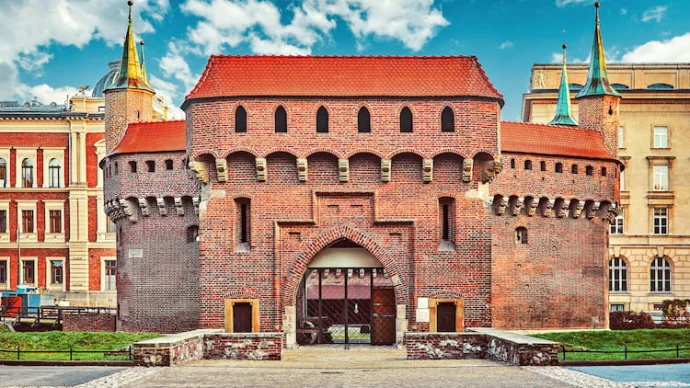
About Krakow Ghetto Wall
Krakow Ghetto Wall is a stark reminder of the Krakow Ghetto, established by German Nazi forces in March 1941 as part of their campaign to persecute the Jews.
History of the Krakow Ghetto
Prior to the invasion of Poland in 1939, Krakow had a significant Jewish population – between 60,000 and 80,000 people – which had existed in the city since the 13th century. Persecution of the Jewish population began almost immediately after the Nazis arrived, and many were conscripted to carry out forced labour in September 1939.
Further forms of discriminatory sanctions were employed, including forcing those of Jewish descent to wear armbands and closing all synagogues. However, when the Krakow Ghetto was created in the district of Podgórze, the occupying army took their campaign a step further, moving 15,000 Jewish Poles into an area that had previously housed just 3,000 residents.
The Krakow Ghetto was a closed ghetto meaning it was guarded, and anyone who left needed authorised paperwork in order to do so. Life in the ghetto was bleak and Jewish cultural practices were hard to keep alive. Music, however, played a large part in the ghetto as a way of keeping spirits up.
Conditions were dire within the confines of the Krakow Ghetto walls and, as well as operating as a holding place in which to categorise Jews according to whether they were fit to work, it was also a form of oppression. In 1942, Krakow Ghetto was closed and all of its inhabitants were sent to concentration camps.
Some inhabitants of Krakow Ghetto were saved during the War by Oskar Schindler, whose famous Schindler’s List was made into a film by Hollywood director, Stephen Spielberg. His factory is nearby. Another famous movie director, Roman Polański is a survivor of Krakow Ghetto.
The Krakow Ghetto today
There are two stretches of Ghetto Wall remaining: one 12m stretch backing onto an old ghetto house with a commemorative plaque in both Hebrew and Polish, the other a much lower, less obvious fragment tucked away in a park behind a school.
Getting to the Krakow Ghetto
The main fragment of ghetto wall is south of the river in Stare Podgorze. Two of Krakow’s main train stations, Zablocie and Podgorze are a 5 and 10 minute walk away respectively. Trams 6, 11 and 13 stop on Limanowskiego, a couple of minutes away.
Featured In

Poland Historic Sites
Explore the diverse history of Poland, from the great Barbakan to the beautiful Wilanow Palace, through our guide to 10 historic sites, landmarks and monuments to see when in Poland.

Holocaust Sites
Explore the harrowing events and effects of the Holocaust through these important sites, museums and memorials around the world.




















